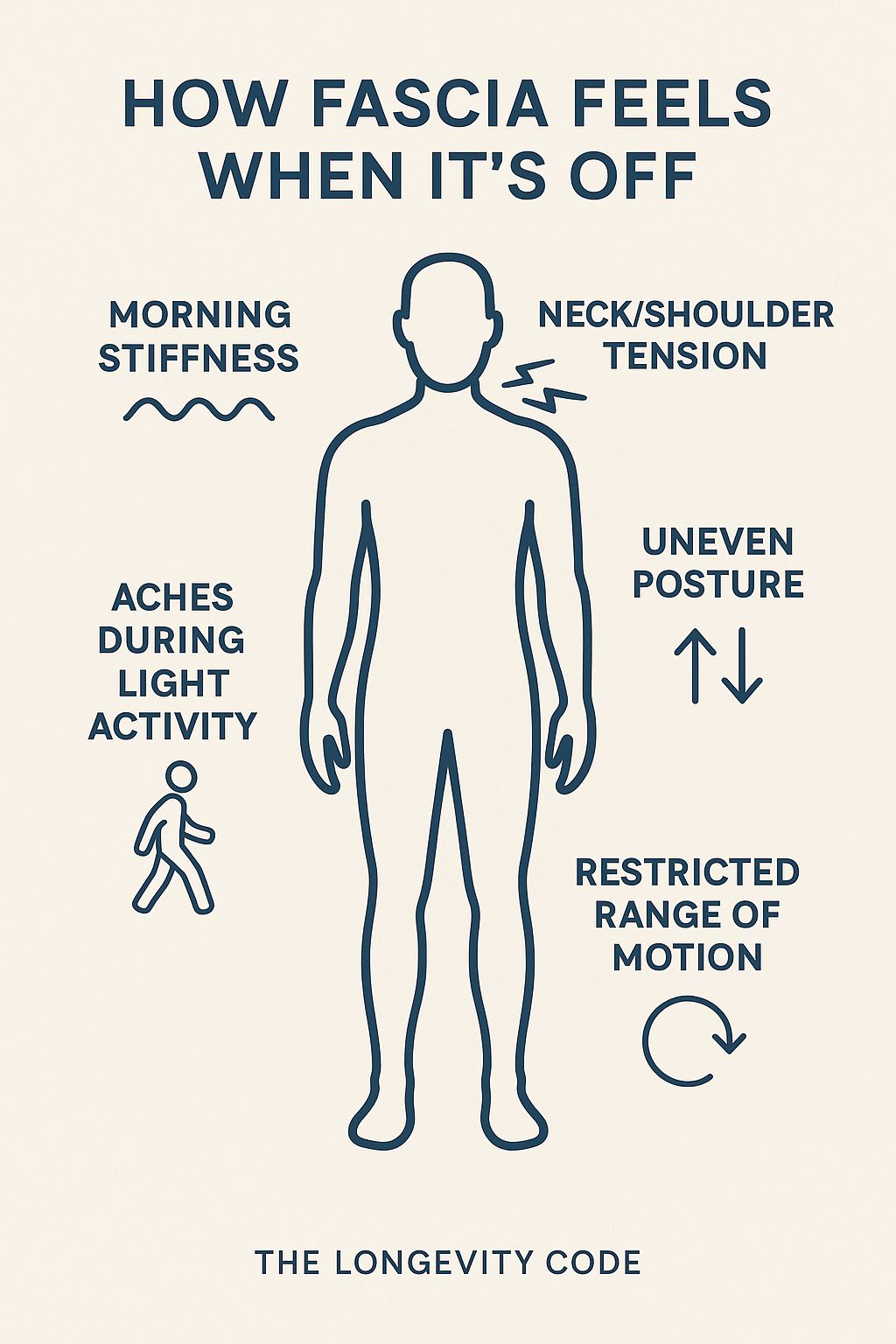- The Longevity Code
- Posts
- Why you still feel tight, even after you stretch
Why you still feel tight, even after you stretch
Fascia could be the missing link between pain, posture, and aging well
THIS WEEK’S CODE:
💡 The focus → Fascia affects how you move, feel, and age
⚠️ The impact → Tight fascia limits movement and builds tension
✅ The fix → Move more, hydrate, and use basic mobility tools daily
Read time: 3 minutes
People tend to blame aging but when you’re feeling tight or stiff for no clear reason what you’re really experiencing is the breakdown of the system no one ever taught you to take care of.
Fascia, the connective tissue network essentially wrapped around your entire body, holds everything together and plays a pivotal role in who you move, recover, and experience pain.
When fascia is healthy and hydrated, it moves with your muscles, supports posture, and improves recovery.
When it becomes stiff or dry, it restricts your range of motion and builds tension that spreads across your body.
In most cases, the stiffness is coming from a restricted fascial system, which is why it’s so important to preserve this system in order to move well for decades to come.

Why fascia stiffens with age

Sitting too long, repeating the same motions, chronic stress, and dehydration can all cause fascia to tighten and lose elasticity.
Over time, this creates postural imbalances, limits flexibility, and contributes to chronic discomfort. It also affects how your body moves under load, whether that’s a workout or a long day on your feet.
However, when fascia is functioning well, you’ll experience:
More mobility, less stiffness
Better posture and fewer joint issues
Faster recovery from workouts or stress
Improved circulation and lymph flow
Lower injury risk and more efficient movement
Fascia and your nervous system
Although fascia has a strong connection to your body’s structure, it’s also connected to your nervous system, through sensory nerves that constantly communicate with your brain about tension, pain, and pressure.
When fascia is restricted, your body tends to stay in a more activated, stressed state.
Over time, this low-level stress can impact how well you recover, how you sleep, and even how you feel throughout the day.
Gentle fascia release, combined with slow breathing, can help dial your nervous system down. This creates a feedback loop where the body feels safer, more relaxed, and better able to restore itself.
Typical fascia support you can build on
Fascia responds best to movement, hydration, and consistency.
Try adding the following into your daily routine:
Foam rolling (1-2 areas daily): quads, glutes, upper back
Gentle stretching after sitting or first thing in the morning
Multi-directional movement: twist, crawl, lunge, hang
Hydration: fascia thrives on water
Massage tools: use a lacrosse ball or Theragun for tight spots
Just 5-10 minutes a day can change how your body feels.
The more consistently you care for your fascia, the less effort your body needs to move well, recover fast, and stay pain-free.
Movement becomes easier, posture becomes natural, tension fades before it builds, forming the foundation for feeling physically good no matter where you are on the age spectrum.

TLDR TRIO
📈 Healthy fascia keeps you mobile, pain-free, and strong
✅ Less stiffness, better posture, faster recovery
⌛ Foam roll and hydrate 5–10 minutes a day goes a long way
